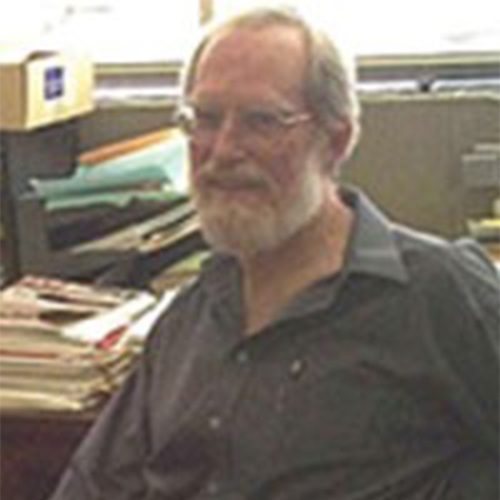
Professor Emeritus
Email: bowen@chbe.ubc.ca
Research Summary
Biomedical Modelling, Natural Convection, Electrokinetic Phenomena, Emulsification, Particle Deposition, Transport Phenomena
Education
University of British Columbia, 1978, Ph.D.
University of British Columbia, 1967, B.A.Sc.
Research interests + projects
Dr. Bowen has ongoing research projects in the following areas: (1) modelling of microvascular exchange in humans, (2) hydrodynamics and mass transport in hollow fibre bioreactors, (3) acoustic filter development, (4) modelling of ex vivo gene transduction and (5) heat transfer in circulating fluidized beds. Many of these projects are being carried out in collaboration with other members of the department faculty (currently Drs. Piret, Haynes, Grace and Lim).
Computer models are being developed which describe the transport of fluid, plasma proteins and small solutes within the interstitium (skin and muscle) and between these tissues and the circulation (blood) of humans and other animals. These models range from simple well-mixed compartmental models to complex, multi-dimensional models which account for, amongst other things, tissue deformation during hydration. As well as being of short-term benefit to experimenters in aiding the interpretation of physiological results, it is hoped that such models will ultimately provide health care professionals with another tool for properly diagnosing and treating various body traumas and diseases.
Hollow-fibre modules, originally developed for dialysis applications, are being pursued as bioreactors for culturing mammalian cells. The cells are grown on the shell-side of the modules while nutrients are provided and waste metabolites are removed by a continuous recycle flow through the tube-side. Models are being developed to predict the movement within these devices of the culture medium, growth and product proteins, as well as small solutes (glucose, oxygen, metabolites) during all stages of reactor operation, including the inoculation, cell growth and harvesting phases. The ultimate goal of this research is to create a validated model which can be used to optimize the performance of hollow-fibre bioreactors for producing high value therapeutic and diagnostic proteins.
An important component of a perfusion culture process is the separator which allows continuous harvesting while returning the cells back to the bioreactor. We have developed a simple, effective filtration device that retains cells by using forces generated by an ultrasonic standing wave field. Work thus far has ranged from fundamental studies that use microscope-based imaging systems to measure the force distribution in the acoustic separator, to more practical performance improvement studies that employ experimental design methodologies. The next stage of investigation is to develop a rigorous model of the transient cell collection process in the separator that can ultimately be used for optimization and scale-up purposes.
Gene therapy is a developing technology that has the potential to treat a wide range of diseases involving genetic defects. Because of their ability to deliver specific genes to the chromosomes of target cells, retroviral vectors are the most commonly used vehicle for gene transfer in scientific research and clinical trials. Models are being developed to predict the retroviral transduction efficiency for a number of different ex vivo gene therapy methods, including the standard static, centrifugal and flow-through protocols as well as a new acoustic transduction modality that we have recently discovered.
Heat extraction in circulating fluidized bed (CFB) combustion units is usually accomplished by membrane waterwalls, an assembly of parallel tubes and longitudinal fins that line the interior of the riser. With better knowledge of the heat transfer mechanisms between the gas-solid suspension and the water flowing in the membrane wall, the design and operation of CFB boilers can be improved and the energy evolved during the combustion process can be used with higher efficiency. The overall objective of these studies is to develop a detailed model of suspension-to-water heat transfer which includes gas and solid conduction, convection and radiation on the suspension side, conduction within the membrane wall, and boiling convection on the tube side.
Selected publications + presentations
Gorenflo, V.M., Ritter, J.B., Aeschliman, D.S., Drouin, H., Bowen, B.D. and Piret, J.M., “Characterization and Optimization of Acoustic Filter Performance by Experimental Design Methodology” Biotechnol. Bioeng., 90, 746-753 (2005).
Labecki, M., Piret, J.M. and Bowen, B.D., “Effects of Free Convection on Three-Dimensional Protein Transport in Hollow-Fiber Bioreactors”, AIChE J., 50, 1974-1990 (2004).
Chaudhry M.A.S., Bowen, B.D., Eaves, C.J. and Piret, J.M., “Empirical Models of the Proliferative Response of Cytokine-dependent Hematopoietic Cell Lines”, Biotechnol. Bioeng.” 88:348-358 (2004).
Xie, D., Bowen, B.D., Grace, J.R. and Lim, C.J., “A Three-Dimensional Model for Suspension-to-Membrane-Wall Heat Transfer in a Circulating Fluidized Bed”, Chem. Eng. Sci., 58, 4247-4258 (2003).
Gyenge, C.C., Bowen, B.D., Reed, R.K and Bert, J.L., “Preliminary Model of Fluid and Solute Distribution and Transport during Hemorrhage”, Ann. Biomed. Eng., 31, 823-839 (2003).